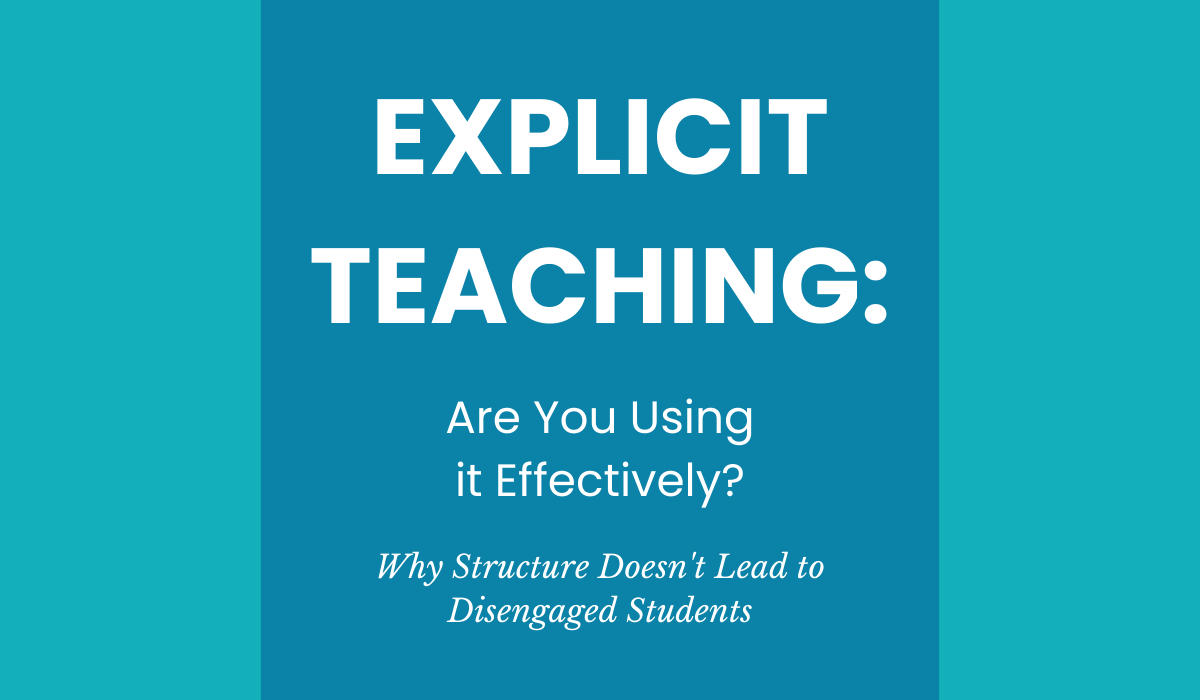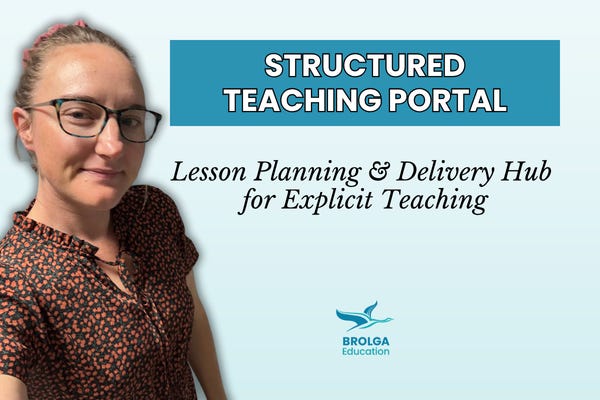Explicit Teaching: Are You Using it Effectively?
Why Structure Doesn't Lead to Disengaged Students
The Reality I Faced in Remote Classrooms
When I first started teaching in remote schools, the reality of the classroom was confronting in a way no university degree, lecture or teaching prac had prepared me for. Attendance was inconsistent, student engagement was low, and classroom behaviour felt like a constant battle that I was losing more often than winning.
The Misconceptions About Explicit Teaching
In my teacher training, I was equipped with inquiry learning, flexible learning journals, and student-directed tasks, and I believed that more “flexibility” and less structure would be the answer to keeping students engaged. At the same time, I often came across the misconception that explicit teaching was outdated, too rigid, and would only lead to more behaviour issues.
But what I saw in the classroom told me a very different story. Students didn’t yet have the foundational skills to arrive at an answer independently, nor the decision-making skills or ability to self-regulate their focus. They struggled to sustain long periods of time in unstructured tasks, which led to frustration. What I witnessed instead were students walking around the classroom, talking to each other, and disconnecting from the learning. The lack of scaffolding didn’t empower them. It left them stuck.
How to Deliver Explicit Instruction Effectively: The Turning Point
The turning point for me was when I was coached by Dr. Silvia Ybarra. I was taught how to deliver a truly structured lesson, particularly how to guide students through worked examples and the guided practice, and how to do the heavy lifting in that stage so they were set up for success when it came time for independent practice.
Once I applied this approach, everything shifted. Behaviour didn’t spiral, it improved. Students who had been completely disengaged started leaning in. I had students who had previously been on behaviour plans choosing to complete maths activities during lunchtime. During independent practice, they were calling me over for feedback, eager to show what they had achieved. They felt empowered because they were starting the day able to complete the work, rather than being caught in a cycle of constant behaviour issues and conflict with the teacher.
Are You Using Explicit Teaching the Right Way?
And that’s the part that so many teachers miss. It isn’t simply about delivering presentation slides in the correct structure, it’s about delivering them properly with the right guidance, steps, the right scaffolds, and the right clarity. That’s where most of the misconceptions stem from. The real question every teacher should be asking is this: Am I using explicit teaching in a way that sets students up for success, or is my delivery confusing students and unintentionally fuelling the very disengagement I’m trying to overcome?
What I Learned After 500 Explicit Teaching Lessons
What I learned is that structure changes everything. A consistent framework keeps students anchored. They know what’s coming next, which means less confusion and more focus. Their cognitive load shifts to the content instead of the task. That’s when engagement starts to rise.
Why I Built the Structured Teaching Portal
That’s why I created the Structured Teaching Portal — a place where teachers can access frameworks for more consistent teaching, such as guided practice examples, ready-to-use explicit teaching templates, and step-by-step resources that remove the guesswork and show you how to deliver explicit instruction the way it was designed to be used.
Because at the end of the day, it isn’t about working harder or constantly reinventing lessons, it’s about leaning into structured teaching strategies to cut through the noise and achieve results, even in the most complex classrooms.



